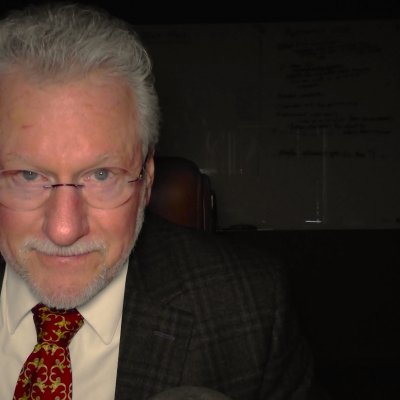I’m not sure why this story came to mind. Perhaps it was an early morning coffee meeting where we were discussing authenticity: what’s real, what’s not. Perhaps it was the discussion of leadership and character, but the theme that kept running through my mind were things that are real and things that are not.
Many years ago, I had a client who work for a screen-printing company. This company created parts such as the displays on appliances or some small features on the inside of a car. One day, we had a long discussion. I wanted to know how they put the wood inside of an automobile on the dashboard. He basically laughed at me and said it is kind of like wood, but you would be surprised what it really is. So, he walked through the step-by-step process on how they made these awesomely, beautiful insides to luxury automobiles with burl oak wood that you will sometimes find on the dashboard of high-end vehicles. He laughed and said technically it is wood, but what they did was take wood, beat it into a pulp, and form it into a piece of paper that looks like wood grains. Then, it’s covered with plastic on the backside and the front with that thin piece of paper in the middle. It’s technically a wood product in the middle, but what you were looking at is really plastic with a piece of paper in the middle. Imagine my disappointment since these automobiles make you pay a huge cost for what you think is luxury style, but is it? Is it real or is it fake?
The reason I was thinking about this today is because of how my friend’s life ended. He was also a client of mine, and 20 years before his death, we put together permanent life insurance protection because he realized he had a permanent problem (dying eventually). We didn’t go with a 10-year level term, which is what you always hear about from the investment gurus on the television or radio, and the advertisements that we see on the internet or social media tell us to go cheap because you only need that protection for a period of time.
My friend had a long and enduring life, but it ended abruptly. In fact, one of the things that we keep in our office are copies of death certificates because we are the ones who process claims. That’s why I wrote my book, Investments Don’t Hug: Embracing the Life Insurance Asset. I probably have had over 40 death claims over my career. I know how life eventually plays out, and I want to be sure that it plays out correctly. So, he purchased his policy at age 30. I can say that the policy “matured” because it became effective in this family’s life when he was at age 50 because of an accident. Someone didn’t make a proper turn in the road. He died instantly due to blunt force trauma.
How did it play out for his family? After we received the notification, we went to work. We processed the claim and forwarded it to the insurance company. Because he had permanent insurance, he was also able to take advantage of some additional benefits:
- He had a large amount of insurance, but because he had a permanent whole life policy, after the second year of the policy, the amount of death protection actually went up. So, the amount of insurance coverage that he had when he died at age 50 was higher than the coverage he had at age 30. Term insurance doesn’t do that. It either stays the same or it expires after a term of time and no longer exists.
- I’m looking at the very last policy statement from years ago. At the time, this individual had a loan out against his policy and that’s also part of the Magic. When a person takes out money against their policy, they are receiving money from the insurance company. Their money stays inside the policy and grows; it’s still producing guaranteed cash value increases and dividends payable by the insurance company that automatically increased the amount of life insurance protection. He was able to use the policy loan feature to get things done whether that was a business opportunity, an emergency, or something else that came up.
- At death, the loan was canceled and became a tax-free benefit to his beneficiaries, his family. There weren’t any tax problems. They didn’t have to answer to a bank. He had planned on paying that loan back, but we can’t plan for unexpected accidents to happen.
Today, as I’m thinking things that are real and not real, is term insurance real? Definitely! If you die during that term of time, it pays out. I have seen death claim payments paid out through term insurance policies, and I have owned a lot of term insurance, but I know I have a permanent problem. I’m planning on living for a long time. I want to be able to have that asset because life insurance is kind of like knowing you are going to win the lottery someday. If I go to the local convenience store, I can buy a lottery ticket and hope to win Mega Millions or the Powerball, but I know that the chance of winning is millions to one. I know when I own a permanent whole life insurance contract, there will be a payout. The question is just a matter of when.
Also, with permanent whole life insurance, the longer you live, the better that payout becomes. There are two pots of money in my life. The pot of money that you know will be paid at exactly the time that it’s needed, that’s the life insurance death claim payout. There’s also the pot of money that you have accumulated in order to life the life you want once you retire. Unfortunately, without the life insurance, what most people do is give their money to financial institutions such as banks or mutual fund companies in the hopes to someday live off of the interest in those accounts. You never really are free to live off of that interest or live off of that principle though because you don’t know when you’re going to die.
Permanent Life Insurance allows a pot of money to be created income tax-free at exactly the moment in time when it is needed, like my friend that passed unexpectedly. Really, when any of us die it’s always unexpected because none of us know the date or place or time. That is the uncertainty. No matter if you are 50, 60, or 100 years old, you don’t know the day.
If you know there will be a death claim payout to your family, that gives you the permission in retirement to spend all of your earnings, all of your interest, all of your dividends, etc. You don’t have to keep your money on deposit with the financial institutions that have already held your assets throughout your 20s, 30s, etc. Now that you're in your 60s, are you really just going to live off of the returns that they give you from your money?
Wouldn’t it be wonderful if you could actually spend your savings in your later years and live your life to its fullest without concerns of running out of money? If you did somehow run out of the money, you would still have safe, sound, and secure money in the cash reserves of your whole life insurance policy.
I talk about this in my book, Investments Don’t Hug: Embracing the Life Insurance Asset. If you don’t have my book, now would be the time to get it through Amazon, Barnes and Noble, iTunes, or Audible. I would encourage you to take a pen and highlighter and make notes. You can live a long and enduring life and also have a safety belt so that no matter how you’re doing with your investments, you’ve got some certainty from your whole life policy that ensures your lifestyle. Permanent whole life is an asset that can take you all the way to your final home, whether through an expected or an unexpected end.
It's just like those my friend who worked in screen-printing. The dashboard looks like wood and feels like wood, yet he laughed at me because it was barely able to be considered real wood. Live for the real life. For more information, explore our website. Perhaps this story will help you realize that you need to start making plans so you can live the life that we’re always talking about. Reach out and contact my team to learn more about living the real life.



